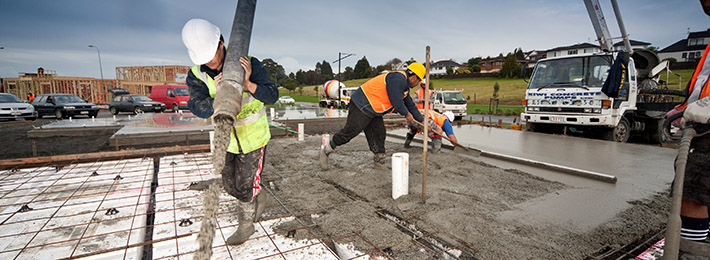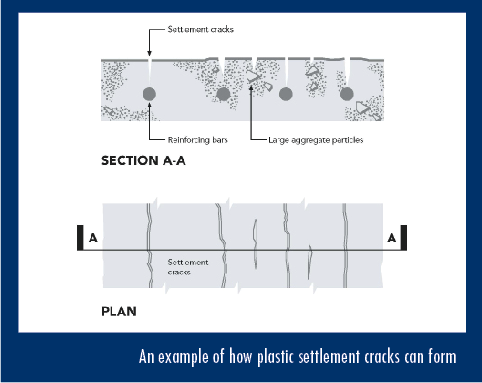You’ve cracked it!
10 Nov 2015, Featured, Prove Your Know How, Technical

With spring upon us, and summer around the corner, we are entering the high-risk period for early-age concrete cracking. This is the second article in a two-part series on how to prevent it
Last month we looked at plastic shrinkage cracks. Another form of cracking that occurs during the plastic stage of the concrete setting process is plastic settlement cracking.
Most concrete bleeds after it’s placed. This means that water rises to the surface as the solid particles settle. The bleed water evaporates, reducing the concrete’s total volume, (ie, the concrete has ‘settled’). If there is no restraint, the net result is simply a very slight lowering of the surface level. However, if there is something near the surface – such as a reinforcing bar – which restrains part of the concrete from settling while the concrete on either side drops, a crack can form over the restraining element.
Settlement cracks tend to follow a regular pattern, replicating the lines of restraint — usually the reinforcement — or a change in section. Generally, the cracks are not deep, but because they tend to follow and penetrate down to the reinforcements, they may reduce a structure’s durability.
Plastic settlement is affected by the following:
- The concrete’s bleed rate.
- Time over which settlement can take place (ie, the time before set).
- Depth of reinforcement relative to total thickness of the section.
- Size of reinforcement.
- Constituents of the mix.
- Slump.
Prevention of Plastic Settlement Cracking
Plastic settlement cracks may be prevented, or rather closed, by revibrating the concrete after settlement is virtually complete and it has begun to set. However, the timing is critical and considerable experience is needed to know when that critical time is. If you revibrate too early, more settlement could occur; if you do it too late, it could damage the bond between the concrete and reinforcement.
Using the following may also help reduce plastic settlement cracks:
- Lower slump mixes.
- More cohesive mixes.
- An air entrainer to improve cohesiveness and reduce bleeding.
- Increasing cover to top bars.
With an understanding of the causes and precautions that can be taken to avoid plastic cracking, this common surface defect can easily be controlled.
The CCANZ Information Bulletin IB 73 Cracking contains more information about concrete cracking, and is available for download from http://www.ccanz.org.nz.
Register to earn LBP Points Sign in



